Book Reviews by Genre: True Crime
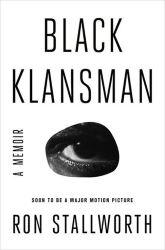
Who knew history could be so ironic? It’s 1978, and the Ku Klux Klan is on the rise in the community of Colorado Springs. Ron Stallsworth, the first African-American detective in the Colorado Springs Police Department, launches an undercover investigation with the mission to thwart the Ku Klux Klan’s infiltration into Colorado Springs. Ron Stallsworth can only communicate via the telephone, so he recruits the “white” Ron Stallsworth, Chuck, to conduct all face-to-face meetings. This creates the perfect breeding ground for irony, insanity, and idiocy.
Out of the pure insanity of the circumstances and the idiocy of the Colorado Ku Klux Klan, this book had me uncontrollably laughing. While the writing style leaves much to be desired, the narrative more than bridges the gap. The BlackKlansmen is a wonderful memoir about standing up to terrorism and hate.
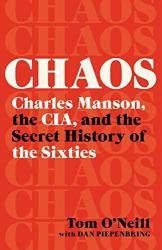
O'Neill's 20-year investigation succeeds at systematically breaking down an impressive amount of the infamous case's centrifugal details and characters, many previously unknown, untold or cast as insignificant. The guy's manic fixation is contagious. The only thing I found unnecessary was the frequency and extent to which O'Neill expressed self-doubt in the 'coda' sections of many chapters, second guessing "where it all goes." It doesn’t matter that there aren’t neat ends; his scrutiny has produced more than enough evidence not only to explode the popular understanding of the details surrounding the Manson story, but also suggest far-reaching implications for all of us in the process.
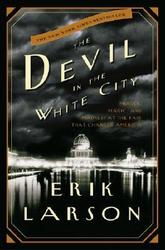
This is a compelling story of the popular World's Columbian Exposition in Chicago and the serial killer who took advantage of it. Set in the late 1800's, David Burnham and H. H. Holmes receive equal attention in alternating chapters between the fair's fascinating architecture and the growth of a heartless killer. I liked reading about the trials and errors of the fair and technology in the 19th century. Also, Holmes' terrifyingly calm demeanor added suspense to what would happen to his victims. It is a cool turn-of-the-century book, but the shift between monotone construction and graphic murders was an interesting style that isn't for everyone.
Grade 11
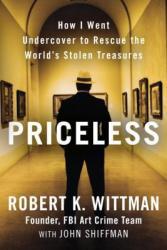
Are you a fan of true crime novels? Do you just love the excitement, the suspense of solving mysteries? Or do you like art and the masters like Leonardo de Vinci? This book is for you. Well on the outside this book might just seem like another true crime story it is really different. I always liked crime novels and tv shows and I was and still am interested in the work organizations like the FBI do to prevent crime. This book has a different approach to your classic true crime novel by not just focusing on how the FBI solves murders but by focusing on how one man (the author) went undercover in the FBI to help recover some of the world's most famous stolen art pieces. It centers around his life and shows other things than just his cases, like how he was suspected of killing his friend. It also tells the story of how he founded the FBI's Art Crime Team. Well this book may not be for everyone if you like a good true crime book this book may work for you. It is slow in parts but makes up for that by telling stories that seem absurd to realize actually happened.

John Glatt does a great job in laying out this heinous murder, based on a true story. Managing to lay out a timeline with both moves and medical complications, Glatt exposes a mother who went to great lengths to do everything she could to create publicity for her sick son. The photos in the middle of the book, as heartbreaking as they are, make a much heavier impact if you wait until you've completed the book to look at them.
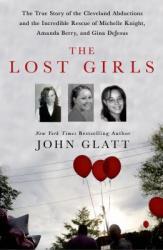
John Glatt is a very skilled investigative journalist and author. This book describes in chilling words the recall of "missing" girls in a small town and the murderer who tries to help "find" them along the way. As usual, Glatt's thorough research exposes the situation in depth. His delicate use of imagery gives all of the information you need to visualize his crimes without being a huge trigger for those with PTSD.
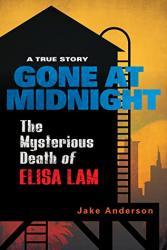
Gone at Midnight is a nonfiction crime book about the mysterious and brutal murder of Elisa Lam. Elisa Lam was a college student from Canada who came to visit Cecil Hotel but went missing. The Cecil Hotel is notorious for having a chilling haunted past. After a week or so Elisa Lam is found dead and an investigation is kicked off. The author goes in depth about how this investigation was messed up and didn't follow the proper procedures. I liked the suspense of the book and learning about how many people on the internet were also trying to solve the case. Finally, the author goes into detail about how this tragic event greatly impacted Elisa's family and on future investigations.
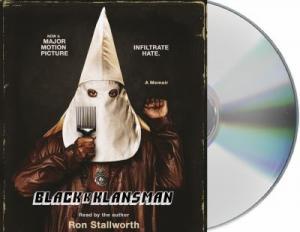
As someone who lives in Colorado Springs and calls this town my home, I was intrigued by Ron Stalworth's story after watching the 2018 Spike Lee movie based on the undercover investigation into the local Ku Klux Klan. Sure, I didn’t live in the Springs during the period covered in this book, but I did have enough understanding of the town to know the locations referenced throughout. To think that I live close to some of the areas that could have been affected by cross burnings or other Klan events is a little eerie to me, mostly because it’s something I rarely think about.
For those who have seen the movie first, this book covers everything that made it to the big screen but also adds some details about other events not directly linked to the Klan (but were still relevant to the discussion of race in the area). I’ll admit that Colorado Springs is pretty white when it comes right down to it. However, there’s still plenty of diversity in this town due to the large military population that occupies Colorado Springs’ five military installations. I know some residents were offended that such a story about the Springs could exist, but the book puts quite a bit of it into perspective (the Klan only had a few dozen people in town).
Admittedly, this book was more of an eye-opener to how the Klan evolved from the violent organization from the reconstruction era of the Civil War to the "political” party that it is today. Sure, they are trying to make the focus more on racial segregation than straight-up genocide like they used to endorse, but it really comes down to old thinking in a new world. It’s like mixing different colors of Play-do: once they’re mixed together, they aren’t going to separate back out to the individual colors.
An eye-opening look into the evolution of the Klan, I give BlacKkKlansman 4.0 stars out of 5.
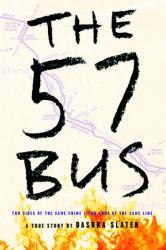
The book, The 57 Bus, by Dashka Slater, is quite the moving novel. The author does a great job of solidifying the main characters, Sasha and Richard, and develops there characters in a beautifully realistic way. The sudden transition for just normal everyday life to a calamity also flows well with the book. The fact that this story actually happens is also very interesting. Overall, The 57 Bus is a fantastic book and I would recommend it to anyone. The novel is a decent length but will have you engrossed in it until the end.
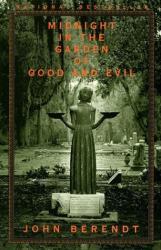
A word of warning: This book contains discriminatory and vulgar language, including the N-word and other severe cusses. Midnight in the Garden of Good and Evil follows a quirky, discombobulated town. The residents are an amalgam of a depressed inventor who's secret poison could kill the entire city, a drag queen who dances exotically and drops bombs of dirtiness, a wealthy and closeted gay antiques dealer who loves to corrupt social norms, and a voodoo priestess who sneaks into graveyards at midnight, among other deranged, hilarious, and nonconforming people. This town is so dysfunctional and dark that it functions. The first half of the book was devoted to charting and describing the mysterious lives of the residents of Savannah, Georgia. The second half followed the conviction and multiple trials of one particular resident after he 'murdered' someone else. However, I would encourage you to read the Author's Note at the end, but only after you finish the book. It left me dazed for days at the major plot twist snuck at the very end.
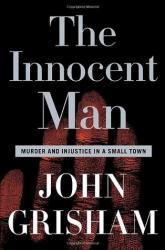
A harrowing story of murder, deception, lies, and the struggle of a broken man to gain his life back, The Innocent Man is an incredible novel.
It's exemplary qualities are highlighted because everything in the book happens to be true. The story follows the tale of Ron Williamson, a baseball prodigy who, after his life begins to fall apart after he loses a career with the Yankees, is wrongly accused of a murder. It then describes his experiences in prison and the things he had to do to prove his innocence.
John Grisham's attention to detail and research is impeccable and top-notch, and the book is riveting for it. I would recommend this book to anyone who likes nonfiction novels, or anyone who likes murder mysteries.
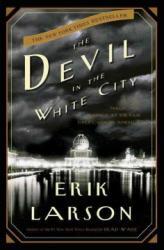
The Chicago World’s fair, also known as The World’s Columbian Exposition, was a world’s fair held in Chicago in 1893 meant to counter France’s world fair and give Chicago back its fame, and even though it was not yet completed when opened, it proved to be a phenomenal success. The Devil in the White City follows the life and story of two interesting men:
Daniel Hudson Burnham and H.H. Holmes. Burnham is the famous architect who directed the construction of the fair and Holmes was a psychotic, but genius and seductive, serial killer who used the World’s fair to lure his victims, almost always women, to their death. Although their lives different, their stories and accomplishments are intertwined and connected, which Larson seeks to condense. With a meager three years to build the fair, and setbacks such as the death of his partner, weather, and health issues, Burnham struggles to finish the fair on time, more or less make it better than France’s.
Meanwhile, Holmes uses his persuading words and charms to commit fraud, acquire debts he never plans to pay back, and worst of all be able to kill and dispose of human bodies with ease. Burnham’s and Holme’s stories never connect in the beginning, and they never meet each other, but as Larson explores the events of 1890-1893, the connection between them becomes clear.
Reviewer Grade: 10
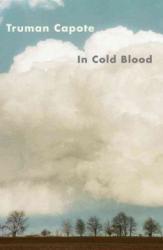
Holcomb, Kansas 1959, the Clutter family was brutally murdered and no one knew who or why they did it. Truman Capote wrote this book as a novel, with dialogue between the murderers and the family; although he was not there, he gathered as much information about the murder as possible and was able to turn it into a book instead of a document. Moving on, the story follows the life of the Clutter family before and after they were murdered, however it focuses more on Richard Hickock and Perry Smith, the murderers of the Clutters. In need of cash, and fast, Hickock calls his old jail friend Perry Smith and they decide to execute a robbery of the Clutter family, who they thought were rich. After invading the house and finding no cash, they dispose of the Clutters, rid of the clues, and escape the law for as long as they could. I love this book since it enables the reader to have a mystery going on in their head and also because murder was uncommon back in 1959, so it enables the reader to feel how it was to hear of a major crime, such as this, back then. I recommend this book to every reader out there, it was very well written and one of the most amazing “New Journalism” type of books, as Capote said.
Reviewer Grade: 11
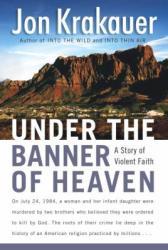
Wow. If there was anyway to just completely rile me up, it was to read this book. Which means the book was really good. I've known just a little about Mormonism from some kids I went to school with and such, but the fundamentalist side of it was alien to me (aside from polygamy). I really makes me wonder about the human condition and the types of religion it accepts, even if it seems like it's being accepted blindly. Great book, and written with more of the facts in mind, rather than a bias.
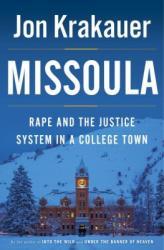
John Krakauer, author of Under the Banner of Heaven, Into the Wild, and Into Thin Air, brings his literary non-fiction style to addressing the topic of rape and sexual assault at the University of Montana, which is located in the titular city, Missoula. Krakauer examines the assaults of five young women with ties to this university during the period of 2008-2012. These case studies examine the culture of sexual assault and how these cases are dealt with by the criminal justice system and the university. Readers should be warned that this book does have some graphic content due to the nature of this topic.
Readers of Krakauer who enjoyed Under the Banner of Heaven will find a similar style of reporting found in this work. Krakauer champions the stories of the five women whose assaults he details as he works to debunk many of the myths surrounding the topic. Most interesting to this reviewer is the research that he presents that not many men commit sexual assault, but those that do tend to be repeat offenders. And many of these perpetrators fail to even realize that their actions are criminal.
Krakauer thoroughly takes to task members of the criminal justice system who oversee the charging and prosecution of these crimes. Other reviewers have found his treatment of those officials to be harsh and one-sided, claiming this to be a departure from Krakauer’s normally unbiased reporting style. This reviewer found that the critical lens Krakauer uses when discussing the many missteps of the criminal justice system to be warranted. He also is critical of the football culture of the area that strives to protect its athletes even if they have harmed others. We see how university officials try to navigate bringing offenders to justice in this type of culture. This book is really more about the culture of sexual assault than it is about Missoula. While it is an emotionally challenging read, it is a worthwhile read and it will hopefully bring more attention to sexual assault and ways that we as a society can prevent these crimes.
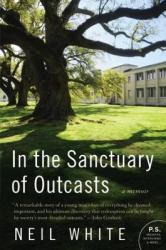
I admit, I didn't know much about leprosy before reading this book. I didn't realize that patients were segregated from society. I thought the disease had been eradicated decades ago! I was impressed with how Neil White told the story of the patients at Carville. Unlike the prisoners housed there, they didn't feel sorry for themselves. They just went on with their lives despite their disease. There was no reason to feel sorry for them.
What I didn't like about the book was Neil White's personal story. I do feel he was remorseful for taking money from innocent people to pay for his big dream of being a magazine publisher and living large. I just didn't like the examples he used when he was trying to express regret like when the first black family moved into his neighborhood or how he blackballed fellow students from joining his fraternity. The worse example was when White discussed how the patients had been disfigured by the disease and how he could "relate" because of the scar on his forehead. That passage really bothered me.
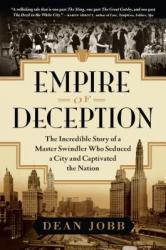
Leo Koretz was a con man operating in Chicago in the 1920s - he was basically like a 1920s version of Bernie Madoff. His crimes have faded into obscurity, so Jobb has decided to tell his story. Leo's story is juxtaposed with that of Robert Crowe, the would-be political climber who was sort of responsible for chasing Leo down and prosecuting him.
I listened to this book, and while it starts off pretty slow, it picks up when Leo starts his swindling, and stays somewhat fast paced and consistently interesting until the very end, when the author reveals the fates of all of the "players", and I didn't really care. I read somewhere that this book reads like a "fiction" book, and I wouldn't really agree with that statement - while it was interesting and paced considerably more quickly than many non-fiction books, if a fiction book spent several minutes/pages outlining the costs of jewelry that a con man gave to his wife (boooooooring), I'd throw that book across the room. Basically, this book was meticulously researched, but at something of a cost - there were a lot of details that felt pretty superfluous, and the details often interrupted the otherwise somewhat narrative flow of the book. I also could've done without the Robert Crowe parts...while Leo was a "real piece of work", Crowe just seemed like a massive jerk. All that aside though, it was a fun, fascinating listen. I liked it - 3 stars.
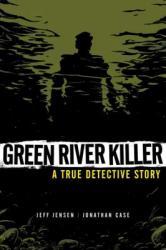
This graphic novel follows Tom Jensen, the author's father, as he hunts the Green River Killer. The story oscillates between the story of catching the Green River Killer (mostly set in the 80s in Seattle) and the post-catching pre-trial interviews with Gary Ridgway. Needless to say, it's a fascinating perspective.
I tend to prefer graphic novels with color, but I thought the artwork in this was great. The artist manages to capture the expressions of the different (real) characters, which led to some very chilling panels. However, the story jumped around in such a way that was confusing - it would often take me a few panels to realize that there was a time jump or perspective switch or whatever.
Overall, this was a pretty gripping read. I'd recommend it to fans of true crime novels.

I love watching true crime on tv and decided to finally read a book in that genre. I chose Ann Rule because she was the queen of true crime writing. This particular book was a compilation of some of the stories she had written about. I was engrossed right away and couldn't put it down. I now know why Ann Rule's books are so popular. In the first story "The Deputy's Wife", she survives her ordeal, but it was scary reading about it. I like that Ann added resources for victims of domestic abuse at the end of this story. The other story that I am still thinking about is "The Truck Driver's Wife". I won't give details, but it truly is a mystery!
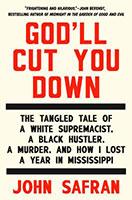
I am a fan of true crime, but I have never actually read a true crime book. I just watch alot of Investigation Discovery! I read several reviews of "God'll Cut You Down" and they were all positive. So I had to read it. What an intriguing story about a murder in Mississippi. John Safran was able to convey what living in Mississippi is like - the haves, the have-nots, politics,etc. It made me sad and afraid to realize that people are still upset over the Civil War. That really stuck with me. But the story of Richard Barrett and Vincent McGee is still a mystery as to what really went on and what lead to murder. I just wish we could know about their secret lives and if that was the real motive behind the murder. A really great true crime book! I couldn't put it down!